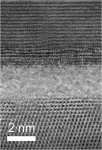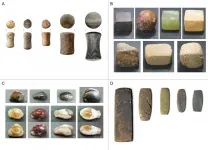(Press-News.org) Los Angeles, Calif. - The AIDS Clinical Trials Group (ACTG), the largest global HIV research network, today announced that findings from a sub-study of REPRIEVE (A5332/A5332s, an international clinical trial studying heart disease prevention in people living with HIV) have been published in the Journal of the American Medical Association Network Open (JAMA Network Open). The study found that approximately half of study participants, who were considered by traditional measures to be at low-to-moderate risk of future heart disease, had atherosclerotic plaque in their coronary arteries.
While it is well-known that people living with HIV are at increased risk of cardiovascular events, including heart attacks and strokes, little is understood about the prevalence and extent of atherosclerosis in heart blood vessels and associated biological factors. The Mechanistic sub-study of REPRIEVE was designed to specifically identify factors that contribute to cardiovascular disease among people living with HIV.
"This sub-study of REPRIEVE is seeking to better understand why people living with HIV develop heart disease, even when their HIV is well controlled and they don't have many traditional risk factors," said ACTG Chair Judith Currier, M.D., M.Sc., University of California, Los Angeles. "REPRIEVE is the largest study of cardiovascular disease among people living with HIV and this is an important early report that sets the stage for future important findings."
Today's publication describes baseline data on 755 participants between the ages of 40 and 75 years old, who were enrolled at 31 sites across the United States. The sub-study used coronary CT angiography to assess the amount of plaque in participants' coronary arteries and then correlated those findings with blood samples that measured inflammation and immune activation.
Nearly half the participants (49 percent) had plaque in their coronary arteries, though the plaques were mostly seen in just a few areas of the coronary arteries. The presence of plaque was associated with a higher burden of risk factors, but also with higher levels of inflammation independent of traditional risk scores. In almost all individuals (97 percent), the plaque was mild and did not cause a narrowing of more than 50 percent of the coronary artery. While significant narrowing was rare, about one-quarter of participants (23 percent) had plaque with features that could potentially cause problems in the future (also known as vulnerable plaque).
In the general population, epidemiologic studies have shown that future cardiovascular disease increases with higher ASCVD PCE (atherosclerotic cardiovascular disease pooled cohort equation) risk scores, an index of traditional risk. REPRIEVE recruited participants with low to moderate ASCVD risk and a low average 10-year risk score of 4.5 percent. The clinical significance of mild or even significant plaque in asymptomatic people with low cardiovascular risk is unknown, as is the effectiveness of statin therapy to prevent cardiovascular disease in this population. REPRIEVE will address these important questions by following these participants to determine if the plaque reported in the Mechanistic sub-study of REPRIEVE is clinically significant (whether it is related to future cardiovascular events), whether statin therapy can reduce plaque and markers of inflammation, and if statin therapy can reduce the incidence of heart attacks and strokes.
"Heart disease is a major cause of illness and death among people living with HIV, including those with well-controlled HIV disease receiving antiretroviral treatment," said Steven Grinspoon, M.D., Massachusetts General Hospital. "Until now, our understanding of coronary artery disease among people living with HIV has been very limited. These findings significantly expand our knowledge and provide important insights that will lay the foundation to ultimately help us better support the health and well-being of people living with HIV."
INFORMATION:
About REPRIEVE
REPRIEVE (the Randomized Trial to Prevent Vascular Events in HIV) has enrolled 7,770 people living with HIV at more than 100 sites in 12 countries around the world in collaboration with the ACTG and is led by Dr. Grinspoon and Michael Lu, M.D., M.P.H., Massachusetts General Hospital and Harvard Medical School; Pamela Douglas, M.D., Duke University; and Heather Ribaudo, Ph.D., Harvard School of Public Health. The Mechanistic sub-study of REPRIEVE was led by Dr. Grinspoon and Udo Hoffmann, M.D., M.P.H., Massachusetts General Hospital. REPRIEVE is supported by the National Institutes of Health's (NIH) National Heart, Lung, and Blood Institute (NHLBI) and National Institute of Allergy and Infectious Diseases (NIAID) as well as by KOWA Pharmaceuticals America, Gilead Sciences, and ViiV Healthcare.
About the ACTG
Founded in 1987, the AIDS Clinical Trials Group ( END
(OTTAWA, ON) The University of Ottawa, the University of Montreal and the Assembly of First Nations are pleased to announce the newly published First Nations Food, Nutrition and Environment Study (FNFNES) in the Canadian Journal of Public Health. Mandated by First Nations leadership across Canada through Assembly of First Nations Resolution 30 / 2007 and realized through a unique collaboration with researchers and communities, the First Nations Food, Nutrition and Environment Study is the first national study of its kind. It was led by principal investigators Dr. Laurie Chan, a professor ...
UCLA engineers have demonstrated successful integration of a novel semiconductor material into high-power computer chips to reduce heat on processors and improve their performance. The advance greatly increases energy efficiency in computers and enables heat removal beyond the best thermal-management devices currently available.
The research was led by Yongjie Hu, an associate professor of mechanical and aerospace engineering at the UCLA Samueli School of Engineering. Nature Electronics recently published the finding in this article.
Computer processors have shrunk down to nanometer scales over the years, with billions of transistors sitting on a single computer chip. While the increased number of transistors helps make computers faster and more powerful, it also generates ...
Scientists and doctors at University College London Great Ormond Street Institute of Child Health (UCL GOS ICH) and Great Ormond Street Hospital (GOSH) have given hope of a gene therapy cure to children with a rare degenerative brain disorder called Dopamine Transporter Deficiency Syndrome (DTDS).
The team have recreated and cured the disease using state-of-the-art laboratory and mouse models of the disease and will soon apply for a clinical trial of the therapy. Their breakthrough comes just a decade after the faulty gene causing the disease was first discovered by the lead scientist of this work.
The results, published in Science Translational Medicine, are so promising that the UK regulatory agency MHRA has advised ...
Boulder, Colo., USA: Article topics include the Great Unconformity of the
Rocky Mountain region; new Ediacara-type fossils; the southern Cascade arc
(California, USA); the European Alps and the Late Pleistocene glacial
maximum; Permian-Triassic ammonoid mass extinction; permafrost thaw; the
southern Rocky Mountains of Colorado (USA); "gargle dynamics"; invisible
gold; and alluvial fan deposits in Valles Marineris, Mars. These Geology articles are online at
https://geology.geoscienceworld.org/content/early/recent
.
A new kind of invisible gold in pyrite hosted in deformation-related
dislocations
Denis Fougerouse; Steven M. Reddy; Mark ...
Natural wood remains a ubiquitous building material because of its high strength-to-density ratio; trees are strong enough to grow hundreds of feet tall but remain light enough to float down a river after being logged.
For the past three years, engineers at the University of Pennsylvania's School of Engineering and Applied Science have been developing a type of material they've dubbed "metallic wood." Their material gets its useful properties and name from a key structural feature of its natural counterpart: porosity. As a lattice of nanoscale nickel struts, metallic wood is full of regularly spaced cell-sized pores that radically decrease its density without sacrificing the material's ...
Knowing the weight of a commodity provides an objective way to value goods in the marketplace. But did a self-regulating market even exist in the Bronze Age? And what can weight systems tell us about this? A team of researchers from the University of Göttingen researched this by investigating the dissemination of weight systems throughout Western Eurasia. Their new simulation indicates that the interaction of merchants, even without substantial intervention from governments or institutions, is likely to explain the spread of Bronze Age technology to weigh goods. The results were ...
Keep your checklists handy because the 62nd Supplement to the American Ornithological Society's Check-list of North American Birds, publishing today in Ornithology, includes numerous updates to the classification of the continent's bird species. A few highlights from this year's supplement, detailed below, include species splits for Mew Gull, Barred Owl, and Sedge Wren, among quite a few others; a transfer back to an old genus for Ruby-crowned Kinglet; and a revision of the linear sequence of passerine families. The Check-list, published since 1886, is updated annually by the AOS's North American Classification Committee (NACC), the official authority on the names and ...
RICHLAND, Wash.--Researchers have increased the lifetime of a promising electric vehicle battery to a record level, an important step toward the goal of lighter, less expensive and long-lasting batteries for future electric vehicles. The work is reported June 28 in the journal Nature Energy.
Such batteries--the goal of research groups the world over--are seen as an important part of the solution to reduce the effects of climate change, and scientists are exploring a dizzying array of options.
One solution on the horizon is a lithium-metal battery for electric vehicles. These ...
(San Antonio, June 29, 2021) - UTSA criminology and criminal justice professors Michael R. Smith and Rob Tillyer working in collaboration with University of Cincinnati Professor Robin Engel examined racial and ethnic disparities in the use of force by the Fairfax County Police Department (FCPD). One of the nation's largest county police departments, the FCPD serves Fairfax County, Va., a major metropolitan county near Washington, D.C.
The team presented the results of its 18-month study today to the Public Safety Committee of the Fairfax County Board of Supervisors. ...
The historic 2020 hurricane season, with its record-breaking 30 tropical storms and hurricanes, left in its wake hundreds of deaths in the United States, tens of billions of dollars in damages, and one important question: Is this what the future will look like?
While most climate scientists agree that hurricane severity, at least in terms of rainfall, will likely increase as the planet warms, there remains uncertainty about the future frequency of hurricanes. Today's climate models offer a range of possible futures, some predicting an increase in North Atlantic hurricane frequency, others a decrease. These conflicting results beg the question: are these ...



